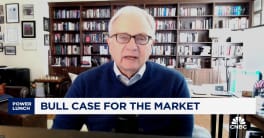Stock markets opened lower on Tuesday morning, jumped more than 1% on mostly positive data thirty minutes into the session, but in a complete reversal an hour later, equities turned course and dipped almost 2.00% into the red.
At 1:30pm, all three US indexes are trading near their lowest points of the day. The S&P 500 has fallen 1.97% to 1,000, while the Dow is trading 1.84% lower at 9,321, and the NASDAQ has shed 1.89% to 1,971.
The sell-off comes after a series of reports suggesting broad economic recovery is picking up mid-way through the summer. Yet investors remain skeptical. Many believe the rapid rise in equity prices from early March to August, which saw markets gain 50%, was not justified by fundamentals in economic data or earnings.
“I don't think there's a consensus that this economy has legs,” said Firas Askari, head of currency trading at BMO. “You can make an argument either way, but the best we can do now is wait. I don't think anybody really knows, which is why I advocate keeping positions small and close to home."
Today’s key report was the Institute for Supply Management’s manufacturing survey, which climbed to its highest level since June 2007 in August, hitting growth mode after 19 months of contraction.
New orders for manufactured goods were at their highest level since late 2004, according to the closely-watched survey, which consults manufacturing executives from across the country.
“The year-and-a-half decline in manufacturing output has come to an end,” said Norbert J. Ore, rather boldly, in the ISM press release.
The overall score in the index was 52.9, nearly 3 points above the 50 threshold marking growth. That’s a huge improvement from the 32.9 score seen last December ― a 28-year low.
“Overseas orders have rebounded in the past several months with a distinct V-shaped pattern, indicating that the global economy is picking up considerable momentum,” said Brian Bethune, chief US financial economist at IHS Global Insight.
Equally supportive of a broad-based recovery in the short-term was the Pending Home Sales Index, which boasted its sixth straight monthly gain in July. Newly signed contracts awaiting finalization climbed by 3.2% in the month, setting the stage for a fifth straight increase in existing home sales.
“The recovery is broad-based across many parts of the country,” said Lawrence Yun, chief economist at the National Association of Realtors. “Housing affordability has been at record highs this year with the added stimulus of a first-time buyer tax credit.”
Linda Duessel, market strategist with Federated Investors, said the twin releases are supportive of a bullish stance in equities.
“This is tough one for the bears. A lot of the bears want to believe the green shoots will wither and fade while the bullish ones think the market has gotten ahead of itself. This data makes it hard to see September as being the negative that people were expecting,” she said.
Bears had one thing to go on at 10:00, however, as Construction Spending pulled back 0.2% in July, in contract to expectations that it would be flat.
Broad advances in new and existing home sales helped residential spending see a 2.3% boost in July, but private non-residential construction fell 1.2%, marking the third straight loss.
Total construction spending has fallen 10.5% in the past 12 months to its lowest rate since February 2004, according to the Commerce Department, who publish the data.
Patrick Newport, economist at IHS Global Insight, pointed out some good news buried in the details: Single-family construction grew 7% in the month, its first increase in 40 months.
“Residential construction has been a drag on growth 14 straight quarters,” he added. “In the first and second quarters of 2009, it chopped GDP growth by 1.3% and 0.9%. But in the third quarter, it will start adding to growth because of the steady rebound in single-family construction spending.”
Looking into afternoon, no more macroeconomic data hits markets. As equities continue to tank, expect the bond market to continue its rally.







